I found this old, but still relevent article on bnet.com
Anyone who’s ever heard a Jimi Hendrix solo knows that guitars can produce fantastic sounds, and anyone who’s ever ogled the curves of a Fender Stratocaster will tell you they’re mighty stylish as well. But the instrument’s appeal goes well beyond its visual or sonic charm, its practicality or even its ties to musical history–it can also be a highly prized collectible. Certain vintage models are often regarded as investments, much like antique chairs or Impressionist paintings. Perhaps this is why so many people who start out with a youthful passion for playing end up happy victims of what Walter Becker of the rock band Steely Dan once drolly referred to as “GAS: Guitar Acquisition Syndrome.”
Look among the ranks of those who’ve caught this particular bug, and you’ll find a surprising number of chief executives, most of whom aren’t professional musicians but all of whom grew up with rock music and are now helping to drive the vintage market upwards. Take Microsoft co-founder Paul Allen, for example; his collection includes the white 1968 Stratocaster that Jimi Hendrix played at Woodstock in August 1969. Bought from an Italian disk jockey for $1.3 million, that guitar is now the centerpiece of the Allen-funded Experience Music Project, a Seattle rock ‘n’ roll museum and historical foundation that opened in 2000.
Allen may be America’s best-known executive guitar collector, but there are lots more. Frank De Fina, president of Panasonic Systems Solutions Company of America, conservatively estimates that his collection is “in the dozens.” Its highlights include a 1939 Martin D-18 acoustic and three electric models lusted after by collectors worldwide: a 1953 Fender Esquire, a 1956 Fender Stratocaster and a 1959 Gibson Les Paul. With such a large number of treasures on hand, storage became an issue. So a few years back, De Fina bought a bank vault to house his collection. “Bank vaults are more readily available than many kinds of vintage guitars,” he quips, “and they’re a lot cheaper, too.”
Tom Simons, president and creative director of Partners & Simons, a Boston marketing firm, doesn’t have as extensive a collection as De Fina, and regards himself as “a guitar accumulator” rather than a collector. Still, the dozen instruments that he’s accumulated would probably strike most people as extravagant. One of them, a Danelectro Bellzouki electric 12-string from the mid-’60s, is described by its owner as “not playable but fun to look at.” Comments like this, by the way, are a sure sign that GAS has taken hold.
Henry Juszkiewicz’s early interest in playing and collecting guitars was so strong that he ended up buying a guitar company; since 1986, he’s been the CEO of Gibson, makers of the legendary Les Paul, among many others. His collection now numbers “around 40,” mainly Gibson prototypes, including two models designed by country great Chet Atkins. Juszkiewicz confesses that he owns guitars besides Gibsons–“I can’t be a one-brand guy,” he admits–but in deference to his position, he won’t reveal what they are.
Diamonds in the Rough
Why has guitar collecting become such a popular pursuit for these and so many other chief executives? Most just love the instrument, for the way it looks, sounds and feels. Many also love it for what it represents: their youth. “There’s a little bit of the outlaw in the electric guitar,” marketer Simons says. “What’s more, CEOs are the business world’s version of rock stars, and a climate-controlled closet humidor full of vintage instruments is a link back to a time when they were able to practice the occasional bad behaviors without repercussions. Those guitars are reminders of when the good times really rolled.”
Of course, there are other, perhaps more shrewd, reasons. “Look at a guitar that sells for $12,000,” says Gibson’s Juszkiewicz, “then look at a diamond that sells for the same amount of money. It’s this little stone. There’s no craftsmanship, there’s no history, and it does nothing. There are a lot of diamonds being sold out there, and yet I would posit that the guitar is of more legitimate value. The reality is that in our marketplace, the investment quality of instruments is pretty phenomenal.”
He’s not joking. In the last few years, the prices of vintage guitars have skyrocketed. The most extreme case is that of the Gibson Cherry Sunburst Les Paul. Approximately 1,700 of these guitars were made between 1958 and 1960 before the line was discontinued due to lack of popularity. Their original list price was under $300; as recently as five years ago, you could find one for $45,000. Today, they’re selling for $250,000. And Stan Jay, president of leading vintage guitar dealer Mandolin Brothers in Staten Island, N.Y., wagers that a mint-condition “Burst” could fetch $300,000 before this year is over.
Other high-ticket items are Martin acoustic guitars made before World War II and so-called “pre-CBS” Fender electric guitars, made before CBS bought the company in 1965. “The rate of appreciation for those models in the last year has been the fastest I’ve ever seen.” says George Gruhn, owner of Gruhn Guitars in Nashville, author of Gruhn’s Guide to Vintage Guitars, and generally acknowledged as one of the world’s foremost guitar authorities. “Some of them have jumped as much as 75 percent.” And though Gruhn is as shocked as anyone by these price hikes, he doubts that the bubble will burst in any lasting way: “I haven’t seen any guitars drop in value and never get back, and I’ve been doing this for 42 years.”
read the rest of the artice here

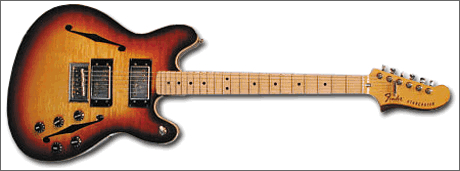
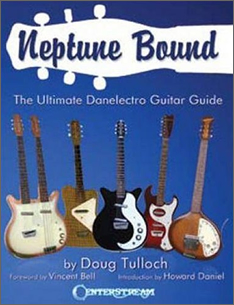
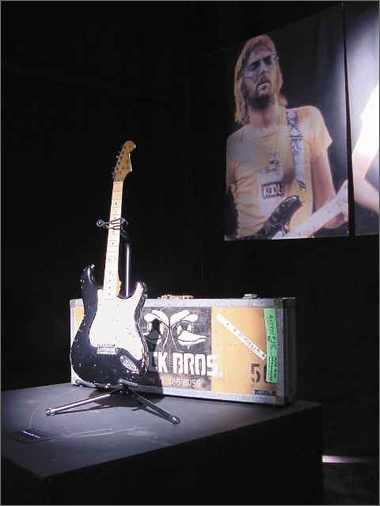 The “Legends Collection” will feature three of rock’s most famous guitars – Eric Clapton’s “Blackie” Fender Stratocaster and Gibson ES-335, as well as Stevie Ray Vaughan’s “Lenny” Fender Stratocaster. Purchased for over $2.4 million from the Clapton Crossroads Centre charity auction at Christies New York in 2004, these three guitars are among the most treasured guitars in rock history.
The “Legends Collection” will feature three of rock’s most famous guitars – Eric Clapton’s “Blackie” Fender Stratocaster and Gibson ES-335, as well as Stevie Ray Vaughan’s “Lenny” Fender Stratocaster. Purchased for over $2.4 million from the Clapton Crossroads Centre charity auction at Christies New York in 2004, these three guitars are among the most treasured guitars in rock history.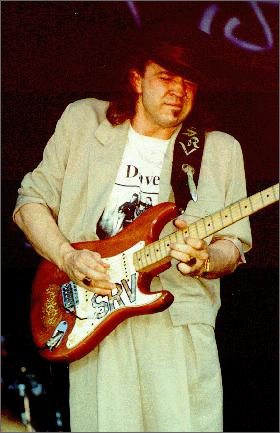
 The instruments, which are smaller and lighter than standard guitars, sell for between $265 and $735 and have found a following among blues aficionados who can’t get enough of the warm sound they provide.
The instruments, which are smaller and lighter than standard guitars, sell for between $265 and $735 and have found a following among blues aficionados who can’t get enough of the warm sound they provide.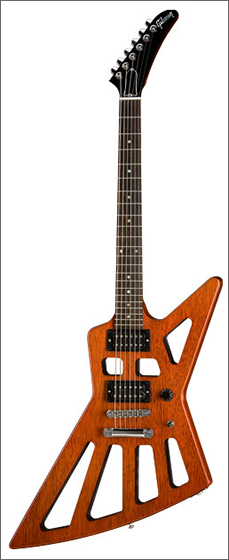 The Holy Explorer is a standard, natural finish Explorer with seven gaping holes cut through the body. There is also a Flying V which has had a similar makeover. The guitars feature the usual attributes of the Flying V and Explorer designs- mahogany bodies and necks, 496R and 500T pickups, and the usual 22-fret rosewood fingerboard. But, those holes…
The Holy Explorer is a standard, natural finish Explorer with seven gaping holes cut through the body. There is also a Flying V which has had a similar makeover. The guitars feature the usual attributes of the Flying V and Explorer designs- mahogany bodies and necks, 496R and 500T pickups, and the usual 22-fret rosewood fingerboard. But, those holes…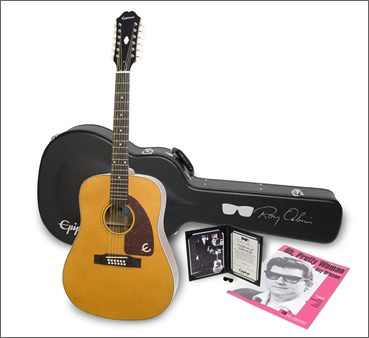 Orbison used his original Epiphone acoustic guitar to write and perform many of his most well-known songs including perhaps his biggest hit Oh, Pretty Woman.
Orbison used his original Epiphone acoustic guitar to write and perform many of his most well-known songs including perhaps his biggest hit Oh, Pretty Woman.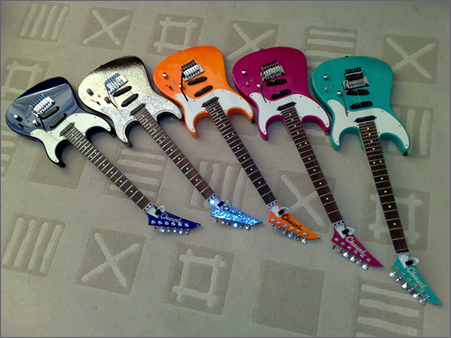
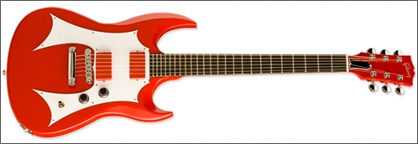
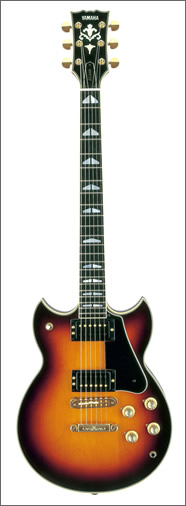

 But Michelle Obama may have struck the right chord with her gift to her newest friend, Carla Bruni -Sarkozy.
But Michelle Obama may have struck the right chord with her gift to her newest friend, Carla Bruni -Sarkozy. Gibson has painstakingly reproduced this knockout vintage acoustic down to the minute details. The Gibson J-45 is one of the most played and cherished acoustic guitars in history. This Legends version of the J-45 can handle music from the blues to bluegrass to folk to pop and everything in between. Â Hand crafted by Gibson luthiers using techniques from the J-45 guitar’s heyday, the Legend J-45 boasts an Adirondack spruce top and solid mahogany back and sides to produce unmatched mellow, full-bodied tone.
Gibson has painstakingly reproduced this knockout vintage acoustic down to the minute details. The Gibson J-45 is one of the most played and cherished acoustic guitars in history. This Legends version of the J-45 can handle music from the blues to bluegrass to folk to pop and everything in between.  Hand crafted by Gibson luthiers using techniques from the J-45 guitar’s heyday, the Legend J-45 boasts an Adirondack spruce top and solid mahogany back and sides to produce unmatched mellow, full-bodied tone.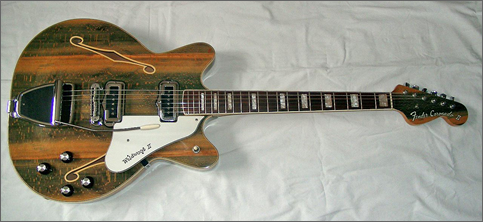 The Coronado II and XII were also available in the desirable “Wildwood†finish, which was an attractively coloured patterned natural grain, made by injecting dyes into growing trees a few years before harvest. There were three shades of Wildwood available on the guitars- Rainbow Green, Rainbow Blue and Rainbow Gold. The bodies were made of maple, and unusually for a semi, the neck was bolted on.
The Coronado II and XII were also available in the desirable “Wildwood†finish, which was an attractively coloured patterned natural grain, made by injecting dyes into growing trees a few years before harvest. There were three shades of Wildwood available on the guitars- Rainbow Green, Rainbow Blue and Rainbow Gold. The bodies were made of maple, and unusually for a semi, the neck was bolted on.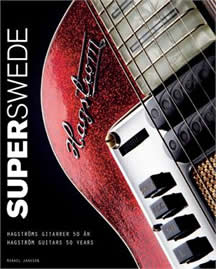 Hagström guitars hold a place in musicians´ hearts. Many of the world´s greatest played Hagström instruments, from ABBA to Zappa. Other international star users are Jimi Hendrix and Elvis Presley.
Hagström guitars hold a place in musicians´ hearts. Many of the world´s greatest played Hagström instruments, from ABBA to Zappa. Other international star users are Jimi Hendrix and Elvis Presley.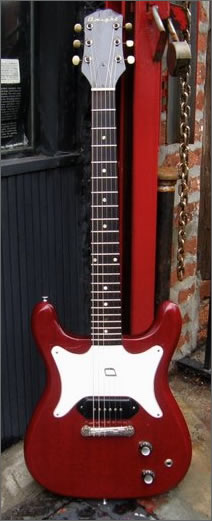 Dwight guitars were made by Epiphone as the house brand for Sonny Shields Music in East St Louis IL, which was owned by Mr Charles “Dwight†Shields.
Dwight guitars were made by Epiphone as the house brand for Sonny Shields Music in East St Louis IL, which was owned by Mr Charles “Dwight†Shields.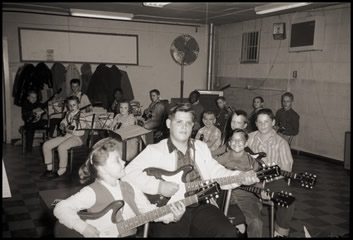
 A long-time sleeper of this Epiphone range, the solid-body Wilshire model represented amazing quality and value throughout the ’60s. Originally intended as something of a rival to Fender’s Stratocaster, offering similar upper-fret access and curvaceous body lines, the Wilshire actually provided similar features and tones to that of Gibson’s own Les Paul Special, at a price closer to that of the more affordable Les Paul Junior.
A long-time sleeper of this Epiphone range, the solid-body Wilshire model represented amazing quality and value throughout the ’60s. Originally intended as something of a rival to Fender’s Stratocaster, offering similar upper-fret access and curvaceous body lines, the Wilshire actually provided similar features and tones to that of Gibson’s own Les Paul Special, at a price closer to that of the more affordable Les Paul Junior.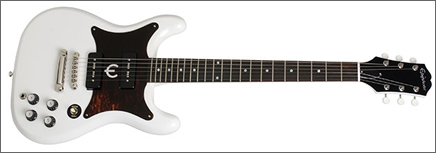
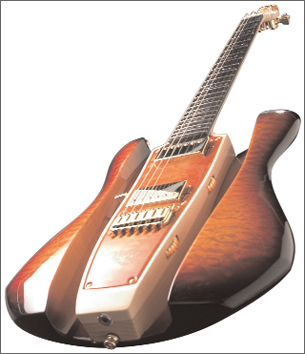 These guitars were designed by Ravi Sahwney, an industrial designer, in conjunction with
These guitars were designed by Ravi Sahwney, an industrial designer, in conjunction with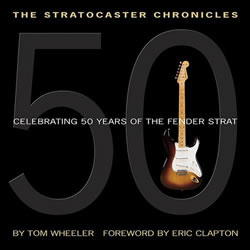
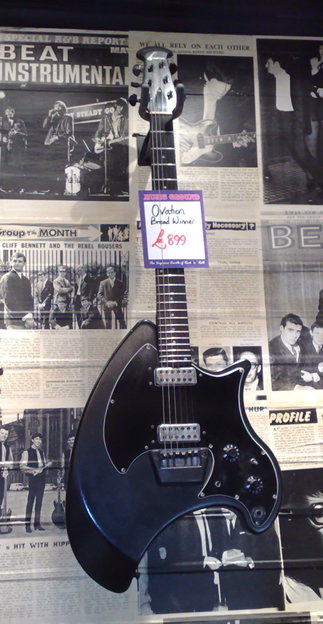 Here is a photo of one of them; it seems to be in pretty good condition and original, but I can’t vouch for that.
Here is a photo of one of them; it seems to be in pretty good condition and original, but I can’t vouch for that.
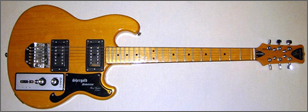
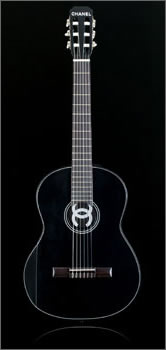

 Mark Lane, the man behind Vintage Guitar Gems is thrilled that Yvonne, a great friend, thought of him and his company when she finally decided to part with this rare beauty.
Mark Lane, the man behind Vintage Guitar Gems is thrilled that Yvonne, a great friend, thought of him and his company when she finally decided to part with this rare beauty.

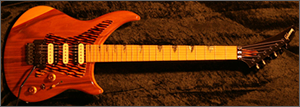 The guitar featured an updated Stratocaster shape with a reverse headstock, and had a set-neck when the trend in Superstrat design was to have a thru-neck, or a bolt-on for the cheaper models.
The guitar featured an updated Stratocaster shape with a reverse headstock, and had a set-neck when the trend in Superstrat design was to have a thru-neck, or a bolt-on for the cheaper models.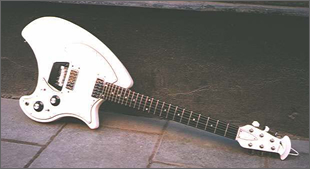 While the former three were fairly normal in design, albeit with traditional Ovation touches in the shapes, the Deacon and Breadwinner seemed almost mutated in comparison, with their bodies shaped somewhat like axes. They also had active mini-humbuckers, rare in the 1970s.
While the former three were fairly normal in design, albeit with traditional Ovation touches in the shapes, the Deacon and Breadwinner seemed almost mutated in comparison, with their bodies shaped somewhat like axes. They also had active mini-humbuckers, rare in the 1970s.
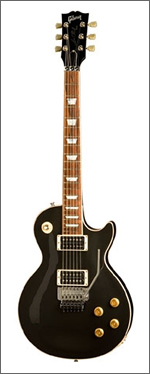 Mark (the manager) and Matt couldn’t have been more friendly and helpful, allowing us to grab whatever guitars we fancied and wailing away with Boogie and Engl amps in their nice  (soundproof!) testing rooms.
Mark (the manager) and Matt couldn’t have been more friendly and helpful, allowing us to grab whatever guitars we fancied and wailing away with Boogie and Engl amps in their nice  (soundproof!) testing rooms. The guitar was unusual in shape, with a 25 1/2″ scale length similar to an ES-335, but with much sharper double florentine cutaways, resembling an SG.
The guitar was unusual in shape, with a 25 1/2″ scale length similar to an ES-335, but with much sharper double florentine cutaways, resembling an SG.
 Ibanez received a cease- and-desist order and decided to make more original models. This culminated in the Iceman and Destroyer of the late 1970s. The Destroyer started in 1975 as a very impressive Gibson Explorer copy also called Model 2459, but was phased out around a year later.
Ibanez received a cease- and-desist order and decided to make more original models. This culminated in the Iceman and Destroyer of the late 1970s. The Destroyer started in 1975 as a very impressive Gibson Explorer copy also called Model 2459, but was phased out around a year later.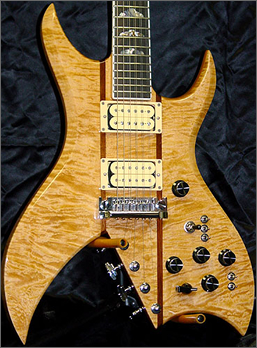 The Bich was launched in 1977 alongside the Seagull and
The Bich was launched in 1977 alongside the Seagull and 
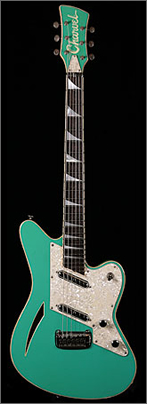 The Charvel company, which spawned the famous and reputable brand Jackson Guitars, is also well known for their very high-quality superstrat models and for a while was the chief supplier of Eddie Van Halen’s guitars. In 1992 Charvel launched their biggest break from their usual superstrat tradition (the company also dabbles in Telecaster-shaped models and four-pointed star-shaped models).
The Charvel company, which spawned the famous and reputable brand Jackson Guitars, is also well known for their very high-quality superstrat models and for a while was the chief supplier of Eddie Van Halen’s guitars. In 1992 Charvel launched their biggest break from their usual superstrat tradition (the company also dabbles in Telecaster-shaped models and four-pointed star-shaped models).
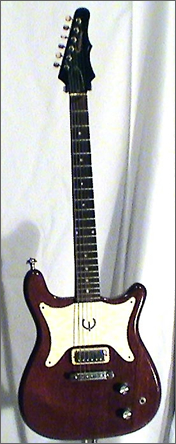 The Epiphone Coronet was launched in 1958 as an alternative to the popular Gibson Les Paul Junior. It was part of a range of models made from the late 50s to 1970. The range included the Crestwood, Coronet
The Epiphone Coronet was launched in 1958 as an alternative to the popular Gibson Les Paul Junior. It was part of a range of models made from the late 50s to 1970. The range included the Crestwood, Coronet 
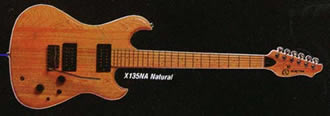 The Phoenix was the best known of Electra’s original models, a vaguely Strat-shaped guitar available as a series of 10-15 different models. The one featured on the site , I believe to be a Phoenix X135 model. This model featured an ash or maple body (the one for sale looks maple to me), and two coil-tapped humbucking pickups. This one is in a natural finish and is possibly an earlier model due to the inclusion of a scratchplate.
The Phoenix was the best known of Electra’s original models, a vaguely Strat-shaped guitar available as a series of 10-15 different models. The one featured on the site , I believe to be a Phoenix X135 model. This model featured an ash or maple body (the one for sale looks maple to me), and two coil-tapped humbucking pickups. This one is in a natural finish and is possibly an earlier model due to the inclusion of a scratchplate.

 I found this guitar for sale today while I was cruising around some guitar sites.
I found this guitar for sale today while I was cruising around some guitar sites.
 The original Mockingbirds had neck-through body design, as all BC Riches then had and many do in the current range.
The original Mockingbirds had neck-through body design, as all BC Riches then had and many do in the current range.
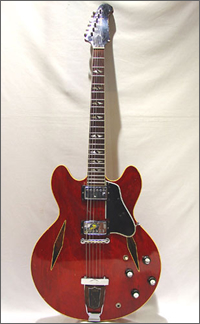 The Standard is based on the classic ES335 shape, but with a trapeze tailpiece (as seen on early Gibson Les Pauls) and diamond-shaped soundholes. The guitar also differed to an ES335 in that it had a Gibson Firebird neck set into the body.
The Standard is based on the classic ES335 shape, but with a trapeze tailpiece (as seen on early Gibson Les Pauls) and diamond-shaped soundholes. The guitar also differed to an ES335 in that it had a Gibson Firebird neck set into the body.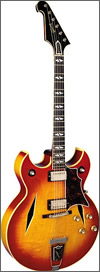 The Lopez models were discontinued in 1971 and are collectible and highly prized today, although not particularly expensive at this point in time.
The Lopez models were discontinued in 1971 and are collectible and highly prized today, although not particularly expensive at this point in time.
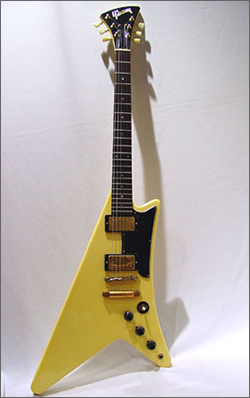 The Gibson Moderne is one of Gibson’s most infamous instruments, and due to its limited production and the story surrounding it, it has acquired semi-mythical status.
The Gibson Moderne is one of Gibson’s most infamous instruments, and due to its limited production and the story surrounding it, it has acquired semi-mythical status. The Corvus (Latin-speakers may know this is a Latin word meaning crow, which is maybe what Gibson were trying to emulate with this shockingly unconventional design) was a complete failure for the company and was withdrawn, having sold barely any units, in 1984.
The Corvus (Latin-speakers may know this is a Latin word meaning crow, which is maybe what Gibson were trying to emulate with this shockingly unconventional design) was a complete failure for the company and was withdrawn, having sold barely any units, in 1984.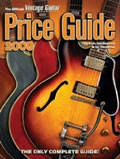 The Official Vintage Guitar Magazine Price Guide 2009 (Official Vintage Guitar Magazine Price Guide)
The Official Vintage Guitar Magazine Price Guide 2009 (Official Vintage Guitar Magazine Price Guide)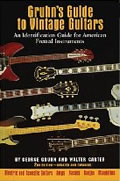 Gruhn’s Guide to Vintage Guitars: An Identification Guide for American Fretted Instruments
Gruhn’s Guide to Vintage Guitars: An Identification Guide for American Fretted Instruments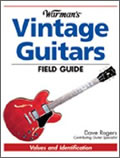 Warmans Vintage Guitar Field Guide (Warman’s Field Guides)
Warmans Vintage Guitar Field Guide (Warman’s Field Guides) Blue Book of Electric Guitars
Blue Book of Electric Guitars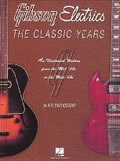 Gibson Electrics: The Classic Years
Gibson Electrics: The Classic Years Ted McCarty’s Golden Era 1948-1966
Ted McCarty’s Golden Era 1948-1966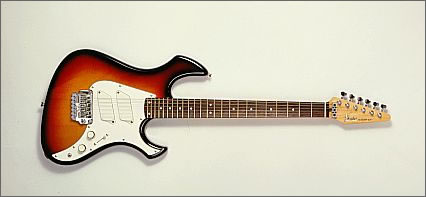 The unusual body and headstock shapes have been rumored to have originated in the shape of the scrap wood leftover from making Japanese Stratocasters. The body is small with a deep double cutaway. The tuning machines are found on the upper edge of the triangular headstock. The fretboard is two octaves and features a locking nut and jumbo frets. The bridge is a floating System I tremolo. Both bass and guitar are built to the highest level of quality and detailing. For example, the controls have inset rubber grips, the tuning heads have fully enclosed gears and the jack sockets are an enclosed, not ‘skeleton’, type, in contrast to many other Fender products with more ‘economy’ hardware.
The unusual body and headstock shapes have been rumored to have originated in the shape of the scrap wood leftover from making Japanese Stratocasters. The body is small with a deep double cutaway. The tuning machines are found on the upper edge of the triangular headstock. The fretboard is two octaves and features a locking nut and jumbo frets. The bridge is a floating System I tremolo. Both bass and guitar are built to the highest level of quality and detailing. For example, the controls have inset rubber grips, the tuning heads have fully enclosed gears and the jack sockets are an enclosed, not ‘skeleton’, type, in contrast to many other Fender products with more ‘economy’ hardware.